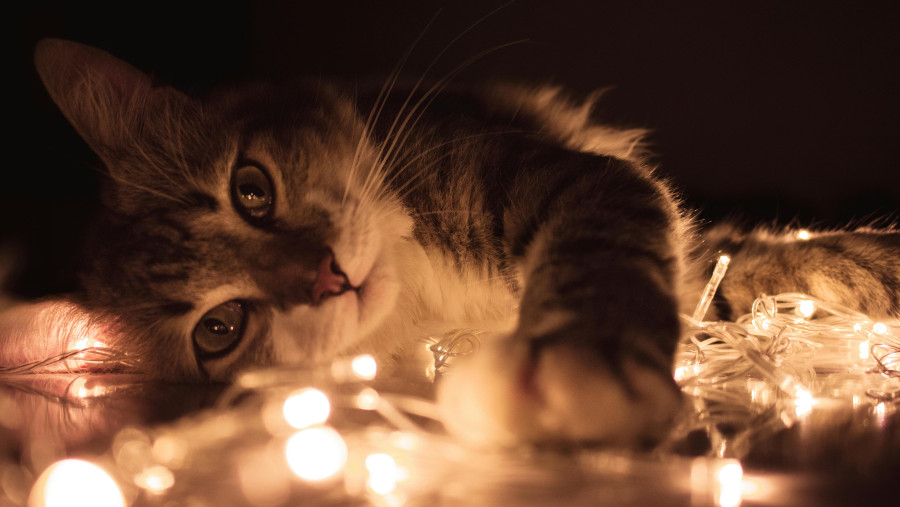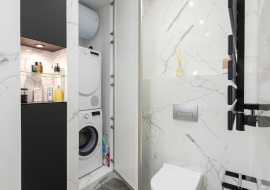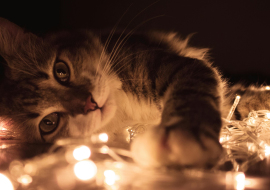
How to stop your cat from escaping from the garden and how to keep it safe
 Over time and with love, cats become true members of the family. That's why many people are afraid that their beloved four-legged friends will leave the house, going out of the garden or balcony. To prevent your cat from escaping from the garden and other safe places in the house, it's important to take steps to keep your cat happy and protected both inside and outside.
Over time and with love, cats become true members of the family. That's why many people are afraid that their beloved four-legged friends will leave the house, going out of the garden or balcony. To prevent your cat from escaping from the garden and other safe places in the house, it's important to take steps to keep your cat happy and protected both inside and outside.
Precautions to prevent your cat from escaping from the garden
To prevent your cat from escaping from your garden, a good place to start is by using high, sturdy fences. Some fences are specifically designed to prevent your cat from climbing over them. These fences often have the top edge slanted inwards, making it difficult for your cat to climb.
Many people don't realize that cats are less likely to try to escape if they can't see beyond the fence. Wood panels, mesh, or thick plants can help block the view and discourage the cat from escaping.
When your cat is in the garden, it is always worth keeping an eye on them. Spending time outside with your cat can also provide stimulation and company, reducing their desire to explore the garden. Creating special areas for your cat in the garden, such as shady areas, safe routes or elevated vantage points, can also keep your cat occupied and happier.
How to make your garden cat-safe?
In addition to creating escape-preventing fences, your garden may also hide other dangers. For example, some plants, such as lilies, azaleas, and oleanders, can be deadly to cats if eaten. Therefore, it is important to remove these plants from your garden to prevent your cat from accidentally eating them.
It is also important to secure hatches, wells and other places where your cat might get stuck. Cats tend to seek shelter from the sun and weather and may climb into places that are particularly dangerous for them. Installing weather-proof kennels or houses, as well as climbing areas such as scratching posts, cat trees or tree trunks, can make your garden safer for your indoor cat.
How to prevent a cat from escaping from a balcony?
A balcony can be dangerous for domestic cats. Kittens in particular have poor depth perception, and the height of a balcony may not frighten them, which leads to the risk of falling.
Installing a protective net around the balcony is one of the most effective methods of preventing escape. Clear nets can be found at many pet stores and are easy to attach to the balcony structure. In addition to nets, using other types of physical barriers, such as plexiglass panels, can prevent the cat from climbing or jumping over the railing. It is important that these barriers are high enough to prevent the cat from jumping over them.
Even after installing barriers, it is always best not to leave your cat alone on the balcony. The precautions taken may not be enough, and even with protective devices, it is best to supervise your cat when it is outside to prevent accidents.
How to prevent a cat from running away from home?
In general, keeping a cat indoors can be difficult, especially if the cat is curious or prone to escaping. If the cat is not used to going outside, leaving the house can be dangerous for its safety.
To prevent escape, training and conditioning your cat is important. Teaching your cat to respond to basic commands and come when called can help prevent escapes. You can reward good behavior with treats and affection.
Even with precautions taken, a cat can still escape. Having a microchip and having your cat wear a collar with an identification tag increases the chances of a quick return. These measures greatly reduce the risk of your cat running away and not being found.
News

23/08/2024
Why are the fuses blown?

21/08/2024
Life in Castelletto

19/08/2024
How to Stop a Cat from Running Away

09/08/2024
6 Most Beautiful Beaches in Genoa

08/08/2024
How is Ferragosto celebrated in Italy?

05/08/2024